
Let’s build your chatbot today!
Launch a no-code WotNot agent and reclaim your hours.
*Takes you to quick 2-step signup.
There was a time when marketers had very few choices in automation. It was a challenging time. In a way, it still is. But now the problem lies with having too many.
Just imagine this. The year was 2011. The marketing automation landscape was picking up, and marketers had a mere 150 marketing technology tools. Fast forward to twelve years later, and that number is more than 50 times higher at 8000 and counting.
This clearly shows how quickly marketing automation is expanding. It also means that if you don’t keep expanding your marketing tech stack and embrace innovative marketing automation strategies, you’re bound to fail as a marketer.
But don’t worry, if you are a marketer who is looking to succeed in today’s cut-throat market, you have landed at the right place. In this article, we’ll go through:
Marketing tech stack - definition & basic concepts
Marketing tech stack components
Marketing tech stack framework
Top 10 tools to have in your marketing tech stack in 2025
What is a Marketing Technology Stack?
Gartner defined Marketing Technology Stack or ‘Martech Stack’ as “a set of software solutions used by marketing leaders to support mission-critical business objectives and drive innovation within their organizations.
In a nutshell, it means identifying the correct marketing platforms & technologies and using them together in the best possible way to achieve the required results.
What is Marketing Tech Stack Framework?
You may have the richest of the marketing tech stacks, but you won’t be able to get the best out of them unless you know how to use them optimally. This is where the marketing tech stack framework comes into the picture.
Marketing Tech Stack Framework can be defined as a strategic approach to organize and optimize the tools and technologies to plan, execute, and measure marketing activities.
It also involves choosing and combining different tools and platforms to create an effective marketing workflow.
Similarly, just like finding the best way to memorize multiplication tables helps students improve efficiency and accuracy, having a well-organized marketing tech stack ensures you are using your tools to their full potential. Understanding the best way to memorize multiplication tables allows for quicker problem-solving, just as mastering your tech stack enables faster and more effective campaign execution. Once you have streamlined your tech stack, you can focus on scaling your marketing efforts without unnecessary delays or errors.
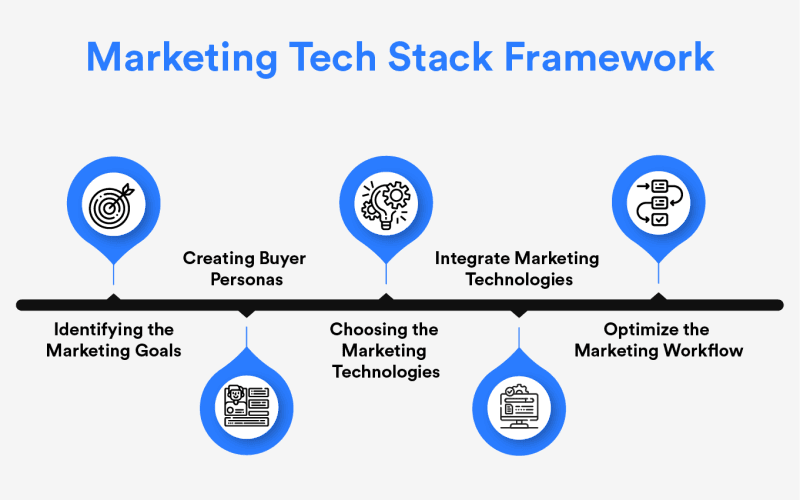
The Marketing Tech Stack Framework involves the following steps:
1. Identifying the Marketing Goals
First, you have to define your marketing goal, whether lead generation, brand awareness, or increasing conversions.
2. Creating Buyer Personas
In this step, you identify your target audience by creating buyer personas. These personas are nothing but a fictional representation of your ideal customers.
3. Choosing the Marketing Technologies
Once the goal and the buyer personas are locked in, next you have to choose the marketing technologies that will help you achieve your goals. Here, you can choose marketing automation tools, email marketing tools, CRM software, etc.
4. Integrate Marketing Technologies
Create a seamless marketing workflow by integrating the selected marketing platforms and technologies. This workflow results in efficient transfer of data and information among different platforms.
5. Optimize the Marketing Workflow
You can optimize the marketing workflow by:
Identifying areas of improvement
Analyzing the performance of each marketing tool
Implementing changes to boost efficiency
By following this marketing tech stack framework, marketers can:
Generate more leads
Deliver better customer experience
Drive more conversions
Key Components of Marketing Tech Stack
The key components of marketing tech stack includes the following types of tools.

1. Customer Relationship Management (CRM) Software
This software helps businesses to manage their customer data as well as interactions like:
Customer’s contact information
Purchase history
Communication preferences
2. Marketing Automation Software
This tools helps marketers to automate several repetitive tasks like:
Email campaigns
Lead nurturing
Social media posts
3. Content Management System (CMS)
CMS helps marketers to create manage, and publish content like:
Blog posts
Web pages
AI Videos
4. Analytics and Reporting Tools
With these tools, marketers can track their marketing efforts and performance by measuring KPIs such as:
Website traffic
Click-through rates
Conversion rates
5. Social Media Management Tools
Marketers can use these tools to manage their social media presence by:
Scheduling & publishing posts
Monitoring social media engagement
Analyzing social media metrics
6. Search Engine Optimization (SEO)
Marketers use SEO tools to optimize their website and content to:
Improve website rankings
Drive more organic traffic
It is evident that there’s no dearth of marketing technologies in the market, as businesses are constantly in search of tools that streamline tasks and aid with workflow challenges. After all, there’s just too much a business can achieve with the right set of tools and fetch ROIs.
So this is the picture. Too many choices, and there’s no other option but to choose those that would be fundamental to your business goals. How do you pick the best?
There’s a way out, and that’s what I’m going to address. From our experiences and team insights, we’ve shortlisted a few tools that have now significantly transformed the way we work. For good.
Let’s have a look.
Top 10 Tools for Your Marketing Tech Stack
1. ActiveCampaign
A typical sales conversion funnel requires an average of eight touchpoints. Most businesses receive a lot of leads through inbound and ads but fail to recycle or reuse them. This task ultimately falls upon your sales rep to follow up with the leads manually. This process isn’t just time-consuming but also mundane. And since it’s humans executing these tasks, accountability remains a big concern.
Instead, why not automate all of it?
ActiveCampaign is a tool that helps automate your follow-up and outreach strategy while also letting you personalize each touchpoint that drives conversions. It enables you to categorize your sales funnel in different stages and track consumer preferences across all of those conversion steps.
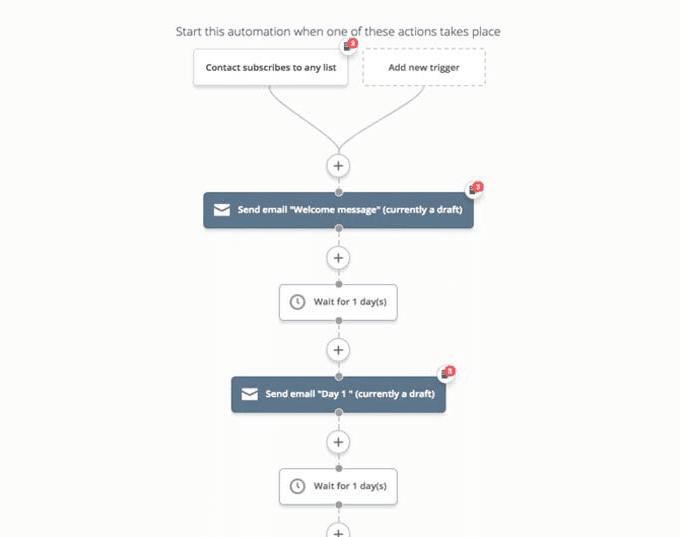
Email marketing has proven, time and time again, to be a very efficient and cost-effective method of lead nurturing. The more targeted and focused your emails are, the more subscriber engagement you can expect.
With the ability to create drip campaigns and split testing, you can improve email sequencing, encouraging better open rates and engagement from your audience.
The most common ways companies use ActiveCampaign are,
Onboarding new customers
Nurturing existing leads
Reviving lost leads
Sending Newsletters
Behavior-based emails
2. Heap Analytics
Data is at the core of everything in marketing. It dictates future plans and gives insights into what’s working and what’s not. An analytics tool is the most common and easy way to read your marketing data which makes it an essential inclusion in this list product-led marketing.
There are a lot of analytics tools in the market, dominated by Google Analytics, that let you track online traffic, understand user behavior, and improve your overall marketing activities. But to use them, you need to have some know-how on how to use the tool, get well-versed with its features, etc. For beginners, a digital marketing free course can be a great way to get up to speed quickly.
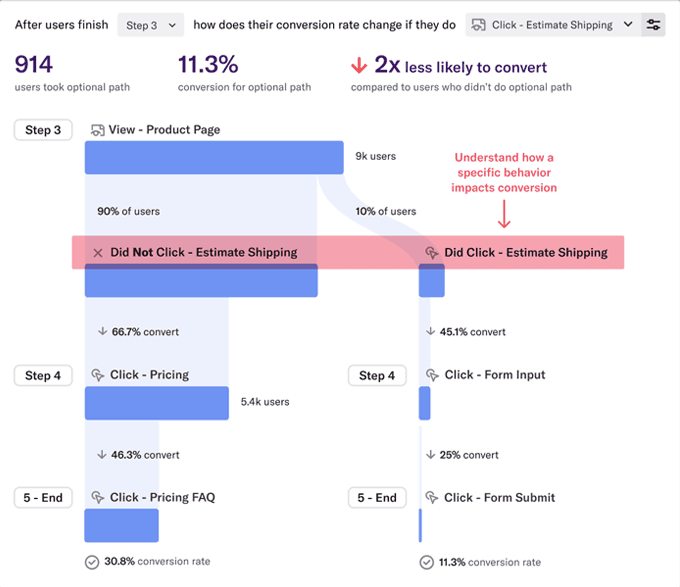
Heap Analytics solves that. The product is made in a way that makes it seem simple and easy, no matter if you are a pro or a beginner. Heap collects all the data beforehand, leaving you only to define the critical events you want to track.
Create reports for the metrics that are important to you and even add multiple reports on a dashboard.
The key features of Heap Analytics include:
Automatic Event Tracking
Retroactive Analysis
Funnel Analysis
Mobile Analytics
Data Accessibility
3. Getsitecontrol
It takes mere 7 seconds for visitors to make up their mind about a website and move on to something else—just 7 seconds. So what your visitors need is the motivation to stay and explore your site to give them a push and get one step closer to closing the sale.
You need to grab their attention, and Conversation Rate Optimization (CRO) tools help you do just that.
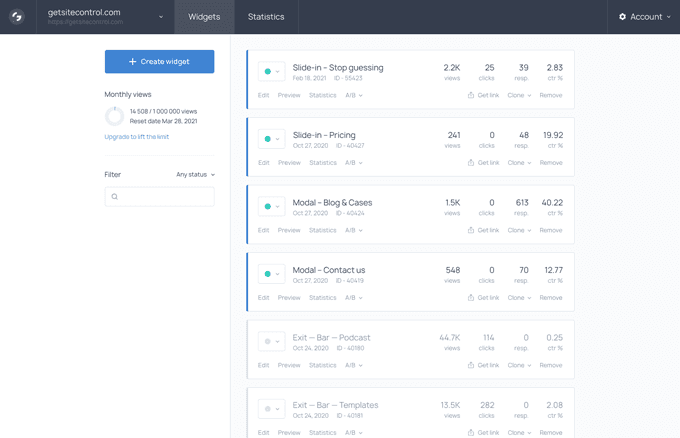
Getsitecontrol is a CRO (Conversion Rate Optimization) tool that lets you convert more visitors into leads from your website. It’s an easy-to-use tool that allows you to build pop-ups and sticky bars so that visitors stay longer on your site and convert eventually.
You can do all sorts of things with Getsitecontrol, like running surveys, announcing updates using sticky bars, capturing visitor information using pop-ups, displaying coupon codes, eventually helping you push them down the sales funnel.
A few reasons why Getsitecontrol should make it to your marketing tech stack are,
Easy to use interface
A plethora of triggering options
A/B test between variations
Analytics on each widget
Customizable widgets
4. WotNot
Your marketing tech stack is incomplete without an automated demand generation and customer engagement tool, and we have a few reasons why we think you should pick WotNot.
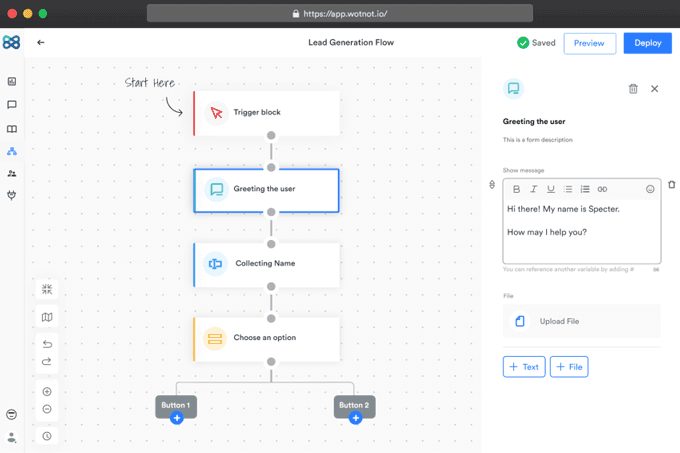
Capture, Engage, and Convert
You spend thousands of marketing dollars to bring visitors to your website, but they visit and go away. That’s leaving you with nothing but numbers on an analytics tool. What you need is to engage with every visitor coming to your website in a conversational manner to probe them to understand why they’re here, gather their contact information, and eventually convert them to sales-qualified leads.
Build Bots Easily
WotNot is a no-code bot-building platform, so you don’t have to worry about its setup and know-how. And even if you don't want to, opt for our done-for-you service, where our experienced team understands your challenges and develops your bot accordingly.
Maximize Efficiency With WotNot's Integrations
Owing to the integrations that WotNot offers, whenever there is a new lead generated, you can simply push the data to your CRM, Email management system, etc.—making it seamless for you to take up the next steps in the sales funnel.
Gain Actionable Insights
Data represented on the analytics dashboard in a business-centric approach helps you identify and analyze the conversion %, the business value generated, contacts generated, geo-location-based insights to improve your conversational flow for an even higher conversion rate.
Also Read: Top 10 Growth Hacking Strategies for SaaS Companies
5. FeedHive
With too many tasks on your hands, let’s face it, you don’t have the time to be active on your social media handles. You cannot overlook it, too, since it’s a critical medium for audience engagement, at least given in this digital age.
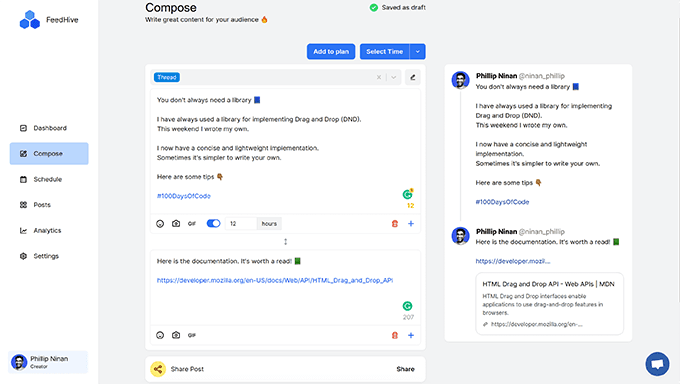
FeedHive is a social media marketing tool where you can create a content backlog and schedule them to post at a specified time, as well as leverage AI to create fresh content.
While you do have a lot of social media tools in the market, what makes FeedHive special is that it aids you with not just scheduling but also creating posts by learning from your post history, suggesting reposts to recycle content.
It has a vast library of post templates that helps you save time in creating and publishing new tweets regularly.
Talking about its key offerings, it helps you to:
Schedule content delivery simple drag & drop feature
Engage with the audience by performing actions like, reply, tweet, mentions, retweet, and retweet with a quote
Gain actionable insights by visualizing post engagements and follower activities
6. HotJar
Let’s say you’ve built a fantastic website. Thousands of visitors visit your website and perform various actions - like page views, button clicks, etc.
However, there are still questions that remain unanswered as a business. How are visitors from the US scrolling through page A? How many visitors clicked on the “Sign up” button? What exactly did prospect A do during their visit to the website? Where do visitors drop off from a feature page?
HotJar answers all these questions for you.
HotJar is a product experience insights tool that gives you insights and feedback to understand your customers better. It is an easy-to-use product with tools like:
Heatmaps
Session Recordings
Surveys
Funnel Tracking
Incoming Feedback Widgets
The heatmaps and recordings allow you to understand where the visitors are losing track and what sections are performing the best. This will help you know what CTAs to use, which design element resonates with the users, and what website layout to use in the future. You can also verify if your A/B test campaigns are working effectively, and it allows you to capture feedback that explains your user behavior.
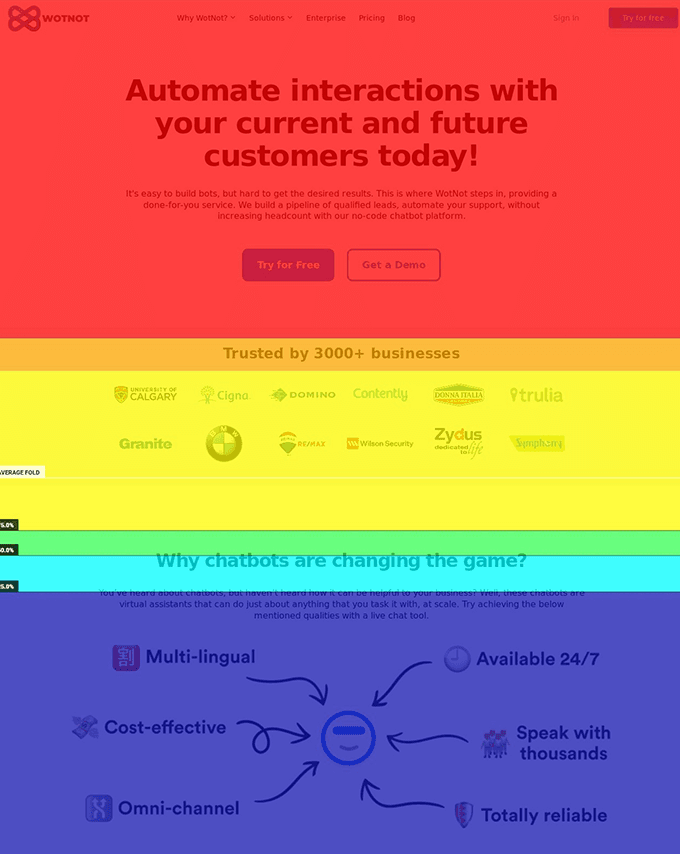
Surveys and incoming feedback widgets are added bonuses that help you get valuable insights from your visitors on their experience and how they actually perceive the product based on how they see it.
7. Calendly
When you already have so much on your plate, you want to be rid of the administrative tasks of scheduling appointments. You aim for inbox zero and fewer back and forth emails to find a time that works with both parties’ schedules.
Calendly is scheduling software that helps you book:
Appointments
Interviews
Calls
Demos
You can simply define your availability and fields to be captured to book a slot (Name, Email, Phone) and embed it on your website or share its URL. Using it, your visitors/customers will easily see the available time slots to book a meeting.
Research says that booking a meeting with the prospect has a higher likelihood of the prospect coming on the call, as compared to filling a form and then your sales reps reaching out. Because the intent to purchase would be at the highest when on your website otherwise, your sales rep will keep following up to prospects to no avail.
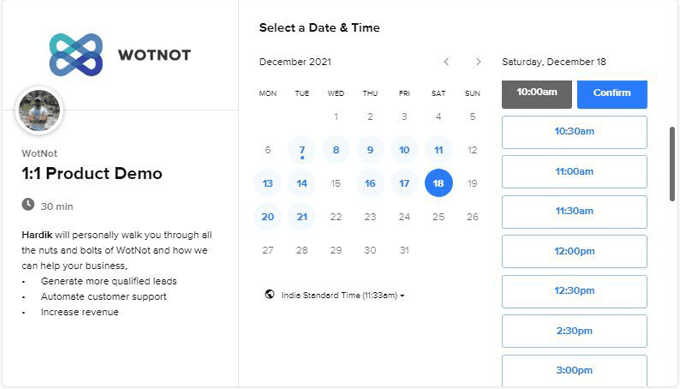
Apart from your website, you can also use Calendly on conversational tools like chatbots where the bot automatically qualifies the leads and schedules a meeting on your calendar. Calendly also takes up the tasks of sending the invites, timely reminders for the event, and updates on schedule changes. All in all, it becomes effortless for you to juggle appointments daily and enhance your chances of generating quality leads.
Also Read: Top 8 Calendly Alternatives in 2025
8. Salesforce
Think about all your sales goals - increasing your pipeline, nurturing leads, qualifying them, customer management, etc. But before you do all of this, you need to have all your customer data under a single roof. You need a platform to access and manage all your contacts, leads, and accounts and know at what stage of the customer journey your prospects are on.
Salesforce is that platform and your go-to CRM software for numerous reasons. It is a cloud-based Customer Relationship Management software that acts as a collaborative hub where various departments can centralize data of its customers and prospects, from the in-product activity to contact information. And being cloud-based, accessibility is real-simple.


With its ability to customize the product to your needs, you can tailor-make workflows, objects, reports, and dashboards to your liking. Thereby helping your teams work together effectively and hand you the most critical aspect for running successful marketing campaigns - data!
Create skill-based routing rules so that the right leads to the right sales reps for an even better conversion rate.
9. Slack
If you want to reap benefits from your marketing efforts, you need a tool that strengthens organizational efficiency. Slack is a well-known team messaging and project collaboration tool that facilitates real-time communication between teammates and organizations through channels.
You can create private and public channels and share messages, posts, articles, etc., with anyone in the workspace.
However, Slack’s use-case goes beyond a communication tool for teams.

Slack offers integrations with a ton of marketing tools. For example, with Slack live chat integration on WotNot, you can manage all the live chats within your Slack account.
Through these integrations, you can get real-time updates of all your marketing activities.
Got a new sign-up? Received feedback from HotJar? Push notifications from all your other Martech tools under a single interface, displayed for all the concerned teammates to view.
This paves the way for discussions and collaboration across teams and improves team productivity based on events.
10. Ahrefs
All your sales and marketing activities start after you get site visitors, but how do you first generate site traffic?
To truly stay ahead of the game online, you need brand visibility. Search Engine Optimization activities help you garner those views online, making potential prospects more likely to click and visit your website. SEO also instills trust amongst your prospects. The bigger your SEO score, the higher the chances of ranking at the top of search engines.
But if you’re intimidated by the word ‘SEO,’ you have Ahrefs to the rescue. Ahrefs can help with all your SEO activities, such as keyword research, ‘clicks’ data, tracking backlink activities, keyword click distribution, ranking history, monitoring outbound links, and a lot more metrics that help you eventually help you get more traffic.
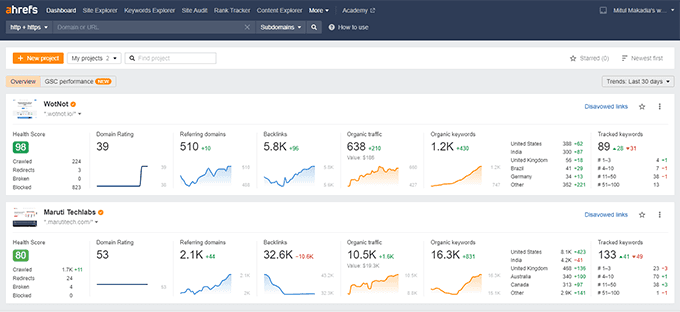
The best part is it doesn’t just allow you to check your SEO activities but also helps with a competitive analysis where you can check how your competitors are ranking, which are their top pages, which keywords are they running ads on, so you can learn and improve your marketing strategies.
Some of the top metrics you have to check on Ahrefs are,
Website Audit (Health Score)
Keyword Research
Backlink Growth or Decline over Time
Analyze SERP History
Content Explorer
Rank Tracker
Domain Comparison
Conclusion
With the marketing landscape is constantly evolving, it has become imperative for marketers to have the right tools in their tech stack to stay ahead of the game. The top 10 tools we've covered in this blog are some of the many options available to marketers in 2025.
From AI-powered analytics to lead generation and automation tools, there's no shortage of ways to optimize your marketing efforts and drive success. By integrating these tools into your tech stack and continually evaluating and updating your approach, you can stay competitive and achieve your marketing goals in the coming years. So, explore these tools today and take your marketing to the next level!
And if you are looking to add a chatbot to your marketing tech stack, choose WotNot. For more information, contact us or schedule a demo now.
ABOUT AUTHOR



Bhavyadeep Sinh Rathod
Content Editor, WotNot
He likes technology, chatbots, comedy, philosophy, and sports. He often cracks hilarious jokes and lightens everyone's mood in the team.

Start building your chatbots today!
Curious to know how WotNot can help you? Let’s talk.

Start building your chatbots today!
Curious to know how WotNot can help you? Let’s talk.

Start building your chatbots today!
Curious to know how WotNot can help you? Let’s talk.


